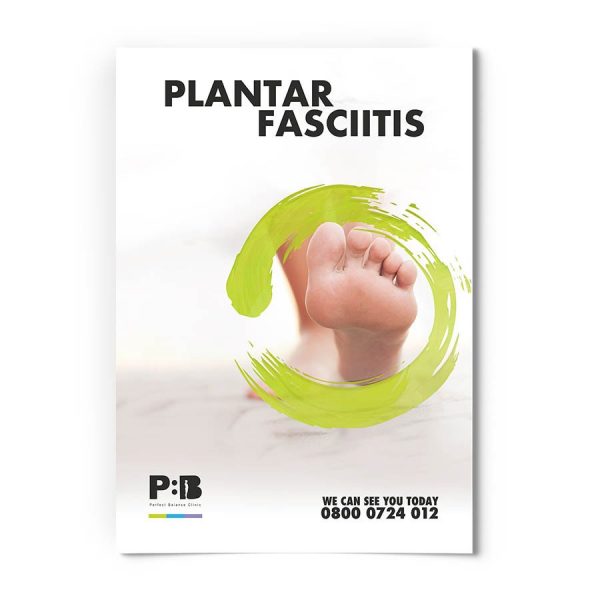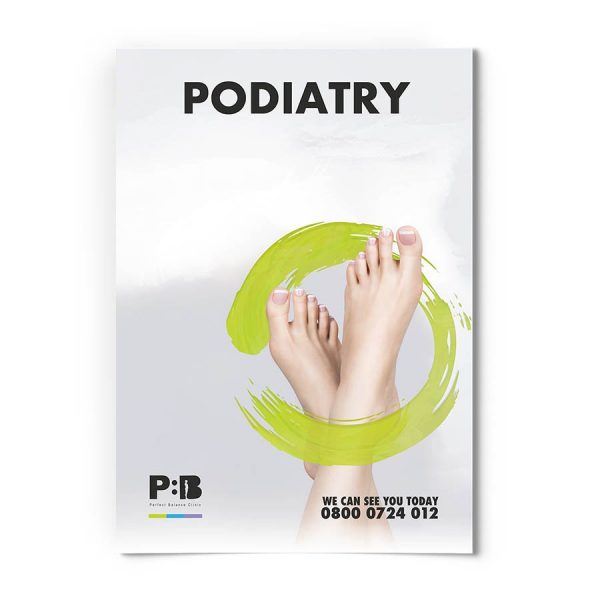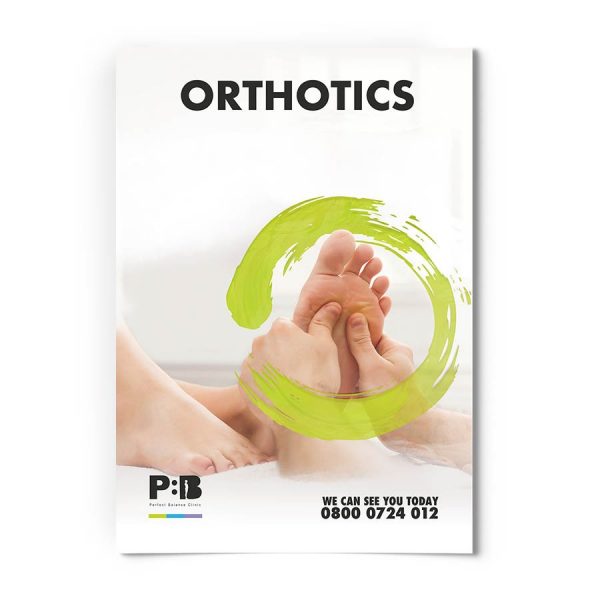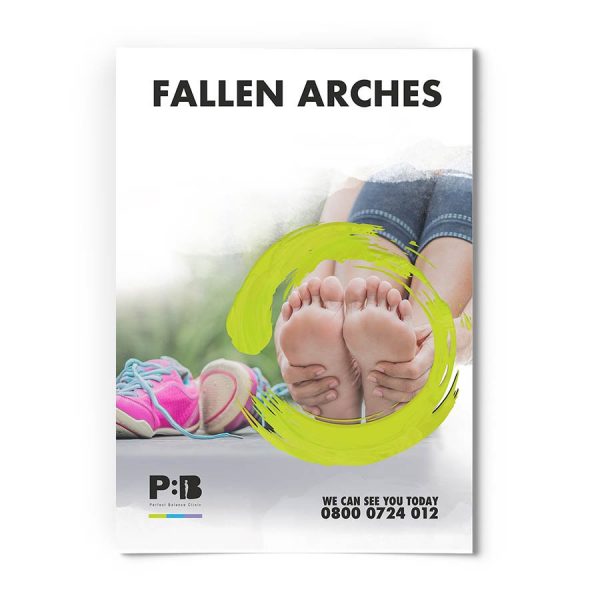The plantar fascia is an elastic ligamentous band that attaches from the calcaneus (heel bone) to the toes. Its purpose is to support the arch and act as a shock absorber during gait (walking). Plantar Fasciitis is a common condition caused by micro-tears in the plantar fascia when it is over-stretched.
Typical characteristic symptoms include heel pain that is worse in the morning getting out of bed and also after sitting for long periods of time, the pain typically subsides after 5 minutes. It is estimated that up to 15% of the population have suffered from this condition, so here are some Perfect Balance tips to help prevent this painful condition.
- Footwear – Make sure your trainers have a well-cushioned sole to absorb some of the impact going through the plantar fascia when running.
- Training Surfaces – If you are a regular runner try switching to a softer training surface to reduce the impact forces going the plantar fascia. Asphalt is softer than concrete and grass or dirt track is softer than asphalt.
- Don’t suddenly increase activity or intensity of training – this puts too much stress on the plantar fascia and could be the straw that broke the camel’s back. Instead, slowly increase the intensity alongside strength and conditioning training for the foot and ankle to avoid injury.
- Warm-up cool down – It’s an obvious point but many runners ignore the importance. If you train without warming up your muscles, then this will restrict your muscle’s range of motion and cause compensatory movements that could lead to increased strain in the plantar fascia.
- Stretch your calf muscles – Ankle range of motion is the most important factor to consider with plantar fasciitis. It is thought that 83% of plantar fasciitis sufferers also have tight calf muscles; both the plantar fascia and the achilles tendon are attached to the heel bone. If one is tight then it will create a tug-of-war scenario and the achilles, being the largest tendon in the body, usually wins. Women going from high heels to flat shoes are commonly affected.
- Rolling of PF – if you’re going to stretch your calf muscles you may as well stretch your plantar fascia as well. You can use a tennis ball, golf ball, or spikey massage ball to roll from your heel to your toes. This helps to stretch out the fibres of your plantar fascia.
- Think fast act fast – The treatment of plantar fasciitis is a long process that can take up to 8 months to resolve completely. Early diagnosis and treatment have the best outcome with the condition resolving in as little as 6 weeks, the longer the condition is left the longer the course of treatment will be.
- PRICE – Protect (Support), Rest, Ice, Compression, Elevation immediately after an injury to reduce the swelling and to aid the healing cascade.
- Preventative insoles – If you have had plantar fasciitis before or you are in a job where you are on your feet all day then your likelihood of developing plantar fasciitis increases. It may be worth considering the use of insoles for prevention.
- Weight loss – When running there can be up to 9 times your body weight going through your feet with each step – think of your feet! If you are starting your weight-loss journey then consider low impact training like the cross trainer to start and then move on to higher impact activities such as running. Also, refer back to the 2nd point on training surfaces.
If you think you may be suffering from plantar fasciitis or would like some more advice on how to avoid plantar fasciitis then book an appointment with our podiatry service today for a full lower limb assessment with pressure plate analysis by calling 0800 0724 012.
How can Orthotics help with Plantar Fasciitis?
For more information about Plantar Fasciitis
This article was written by our team of specialist therapists at Perfect Balance Clinic. If you would like more specific advice about how our team can help you with this condition or symptoms you may be having, please complete the contact form below and one of the team will get back to you shortly.








